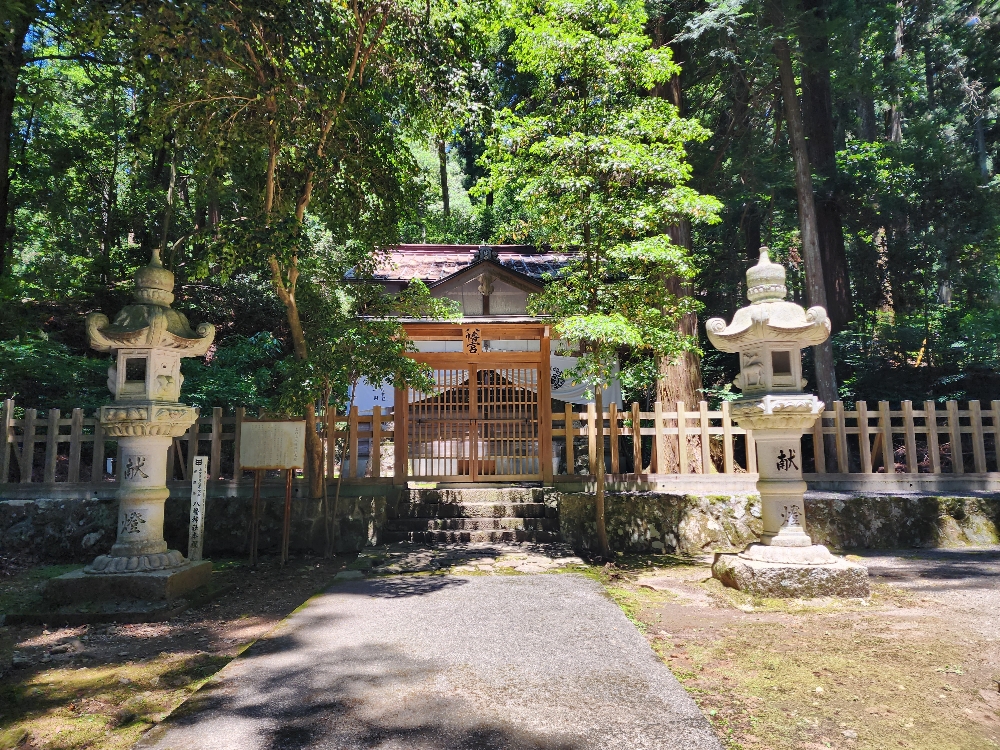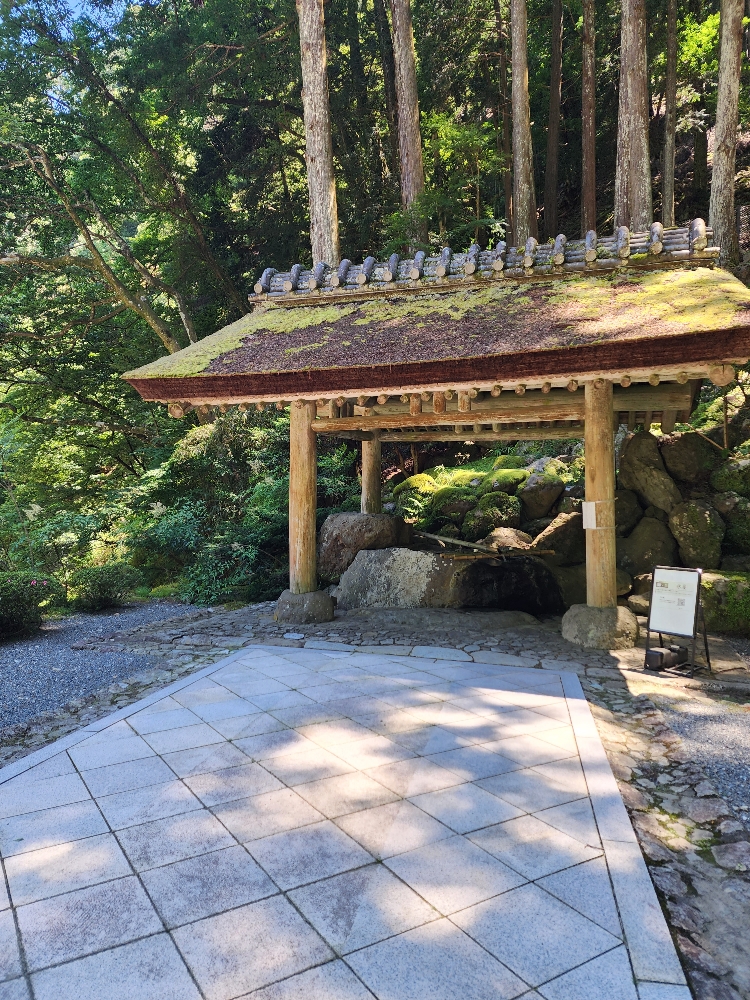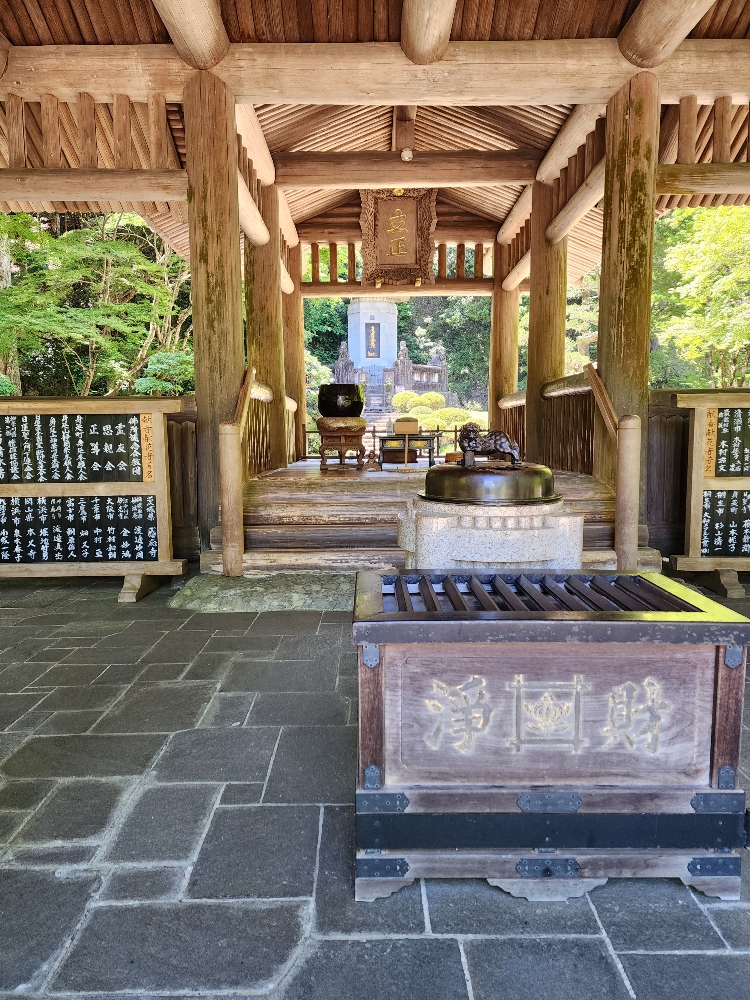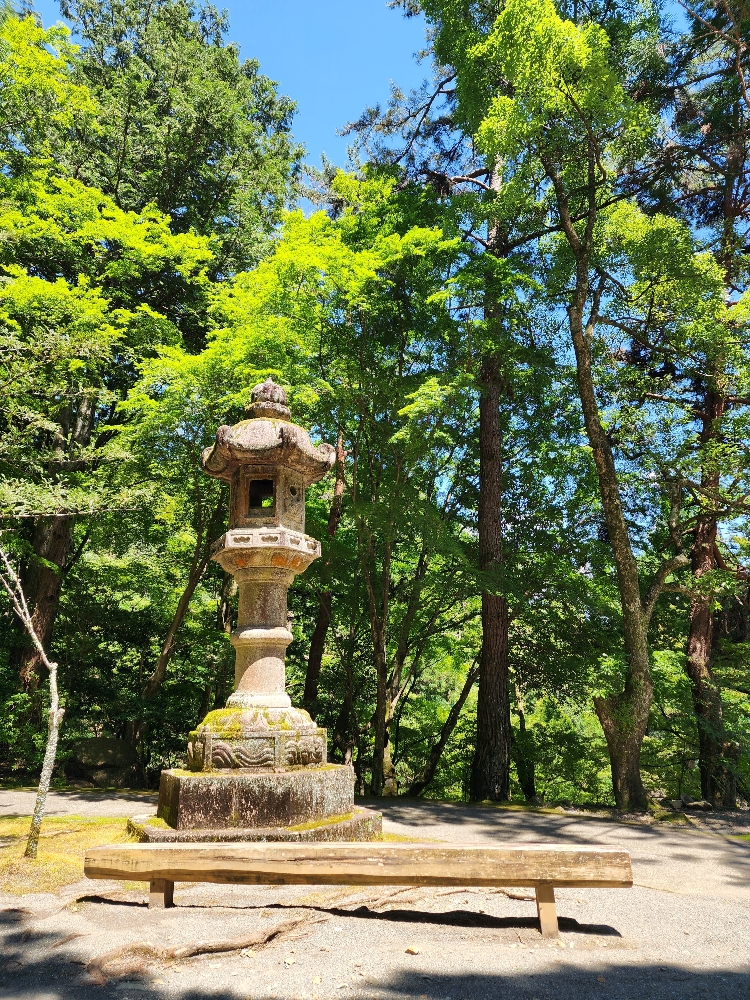Part of why I planed a solo adventure was to take time to visit (on my own terms) some of the places of Nichiren Daishonin-a Buddhist monk, teacher, leader, and social activist who fought for the idea that all people, not just those who practice in the priesthood, are Buddahs. It is from this ideal that my current practice in Soka Gakkai blossomed.

The sign at the gates entering the area of the temple and it reads open meeting gate (or something like that) to mean that all are welcome to become a Buddah. I had been really entranced by Buddhism since my teen years (when I checked out a book on Zen Buddhism from the library). So much of it made sense to me, except all the getting rid of the “earthly desires.” A year or so ago I finally talked to my taiko friend who practices Buddhism and she interoduced me to Soka Gakkai: an organization that believes all people are Buddahs, they just have to realize their potential. S
This trip, therefore, was very important to me. I was walking in the same areas that Nichiren himself walked. I saw where he lived for nine years. It was not without conflict, however. Those who “own” this property currently are of the Nichiren Shoshu Buddhist sect, who have expressed their distaste of Soka Gakkai (SGI) for years. SGI spilt from them almost a decade ago, so it was troubling to see some of their practices, which seem so opposite of those Nichiren intended. For example, I watched a Gongyo session (where one recites part of the Lotus Sutra) but it was lead by elaborately decorated priests.
Still, it was amazing to see all of these places so well preserved, and for that I am grateful. Below, is the site of the Hachiman shrine. Hachiman was a follower of Nichiren who recieved many of his letters (now published in the Gosho). I read one of these on my way up the steep slopes to this area.

I also made sure to visit the site of Nichiren’s ashes, near to where he sat, studied, and taught for the last nine years of his life.

It struck me that the purification site (located in front of all holy places) was so simple. At the head temple, for example, there is intricate stone work and some even have water pouring from the mouth of a dragon. The simpilicity of this area really reflected Nichiren in my eyes. I also found out later that the water here is fed directly from the Minobu river, a river Nichiren mentions many times in his writings.

After entering (even though I was over heated and exhausted at this point) I stopped to pray. A man was reading a book next to me so I tried to be quiet and respectful. I saw this a few times: men would go to important spots and just read from a book of some kind, holding their prayer beads.

Afterwards, I took a long break on a bench nearby the area where Nichiren lived, just taking in the area. Everything was covered in moss-so green and full of life.
